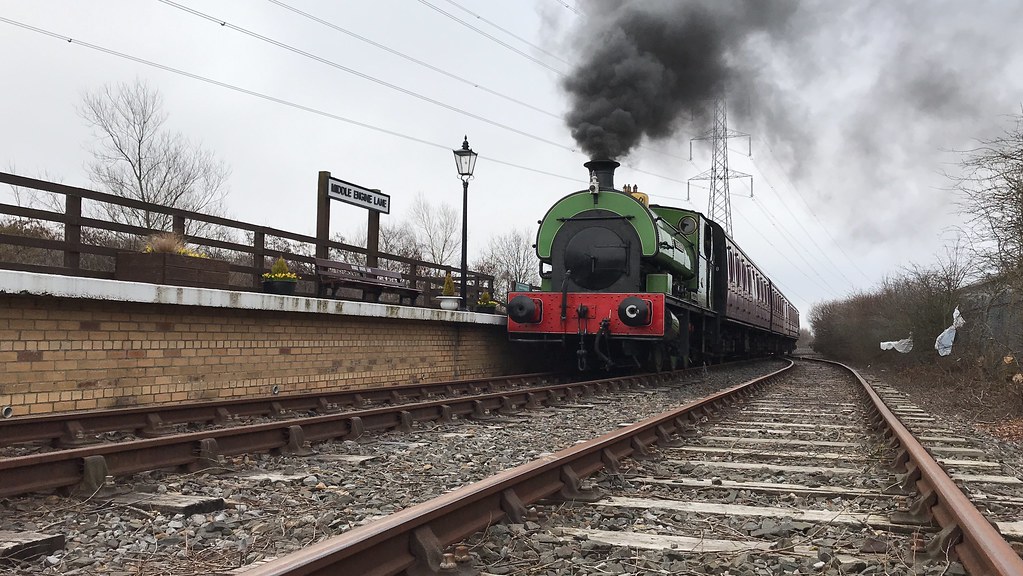#thornton railway station
Text
Ticket office decision was 'Halloween nightmare' for Tories
Hailing yesterday’s decision to reject Department for Transport plans to close railway station ticket offices, one local campaigner has described the outcome as a “Halloween nightmare for the Government”.
Strong opposition: 600 passengers who use Sanderstead station signed a petition opposing ticket office closures
In July, nine train companies announced plans to close 269 station ticket offices…

View On WordPress
#Charlie King#Conservative#Coulsdon#Croydon#Department for Transport#East Croydon station#East Surrey Transport Committee#Govia Thameslink#GTR#London TravelWatch#Norwood Junction#Purley#Railway ticket offices#South Norwood#Thornton Heath#Tory
0 notes
Text
The first episode of the new North and South radio drama is coming out in a few hours, and the summary for episode 3 is finally out, so this is what we know about the contents of each episode:
Episode 1: Margaret Hale and her family are forced to move north to the industrial mill town of Milton, an upheaval that brings the awakening of her social conscience. When a strike threatens the town, Margaret finds herself pitted in passionate opposition to the values of local mill owner John Thornton, one of her family's few acquaintances in their new home.
Episode 2: The Hale family have moved North to Milton, an industrial mill town. Margaret's friendship with Bessy, a young mill girl who died, has brought her into close contact with the suffering of the workers. Now Bessy's father, a union leader, has called a strike and Margaret finds herself caught in the middle between the workers and the mill owner, John Thornton, one of her family's only acquaintances.
Episode 3: Following the death of a man at the railway station Margaret's reputation is compromised once more. Only John Thornton stands between her and the police, but can Margaret ever redeem herself in his eyes?
According to this, then, episode 1 would be covering chapters 1-16, episode 2 chapters 17 to 34, and episode 3, chapters 35 to 52. This makes sense in terms of dividing the story according to chapters, but not that much in terms of plot, so... hmmm.
In the character list, we do not get a casting credit for Edith, captain Lennox, or Fanny Thornton, which means none of them would have a speaking role; a character that gets a single mention in the novel, another mill owner by the name Henderson, is credited for both episode 1 and 3, which is a curious thing. Bessy is only credited on episode 1, which, considering her last speaking part in the book is chapter 25, she either dies earlier in this drama (more likely) or episode 1 ends with Mr Thornton's proposal (more unlikely). No Helstone characters are credited for either episode 1 or 3, so perhaps there's no Helstone visit or seaside plot, unless the adaptation has narration and it is covered that way (but there's no credit for a narrator, so if there is any narration, it will come from the characters themselves).
This is as far as my guesses go, we shall see what episode 1 brings!
2 notes
·
View notes
Photo


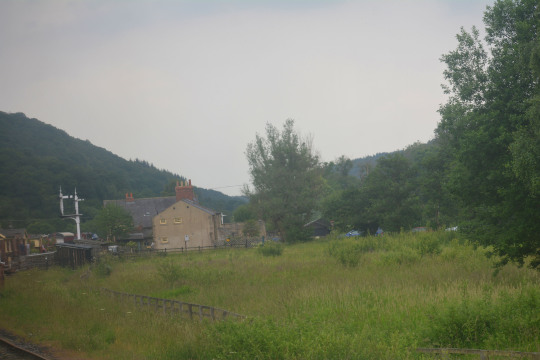

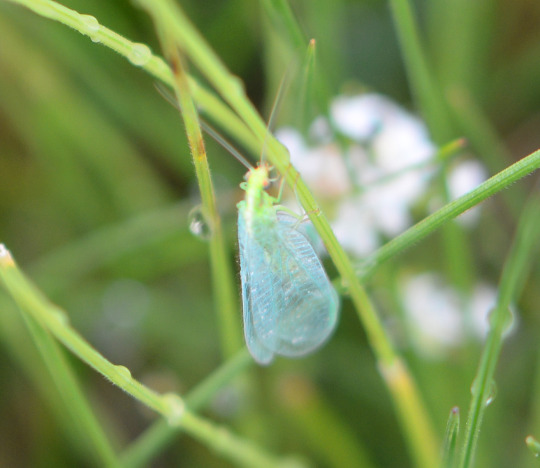
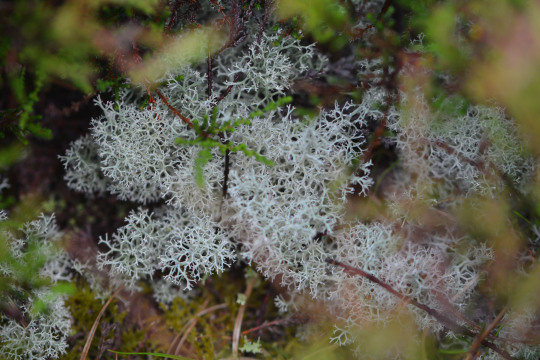




24th June 2022-Trip on the North Yorkshire Moors Railway from Goathland to Pickering, Goathland Viewpoint, Thornton-le-Dale, the cottage and a local walk
I enjoyed seeing the crane fly in the first picture in this photoset in my bedroom in the cottage before bed last night and again today, I do like these and its one of a few flies to see in the cottage this week. A slightly longer post tonight perhaps rather than split into different parts as the day panned out with short bits I wrote about different places that when I wrote up on the way back to the cottage from further afield places all fitted into one but some things this evening I wrote about a fair bit but just felt like keeping it as one post.
We did something a bit different for our last full day in Yorkshire and went into Goathland and rode the North Yorkshire Moors Railway to Pickering and back. It was a lovely relaxing thing to do and was really interesting to ride a vintage train, one that we had seen coming through the valley when at Fen Bog Nature Reserve yesterday. And there was some stunning moorland, woodland and boggy scenery on the journey which was so beautiful to see adding to a stellar set of views admired this amazing week away and it was a wonderful way to enjoy this. I took the second and third pictures in this photoset of views from the train.
I spotted some interesting wildlife on the journey including Grey Wagtail in a stream, Roe Deer in a field, Woodpigeon, Buzzard, a wet female Pheasant in the rain which was interesting, Herring Gulls and it was nice to see Blackbird, Swallows seen well and House Martin with a nest yet again this week at Goathland station. It was also great to see two butterflies quickly here I believe Small White and Painted Lady and I saw moths on the journey too. I also enjoyed seeing Sheep and cattle both with young from the train.
There were a delightful array of flowers at all stations passed on the journey including foxgloves, and on the journey it was brilliant to see bits of the landscape painted pink by foxgloves. It was also nice to see yellow iris, red campion, herb-Robert, honeysuckle, lots of nice roses, some poppies, cornflower and others in a nice wild grass patch, broad-leaved clover, fields covered in white clover, hogweed and many other flowers on the journey which looked so beautiful. There was also what looked like rosebay willowherb at Goathland station.
We then had a brief walk at Goathland Viewpoint car park where we came on Sunday, with the sun emerging after a shower, slightly misty scenes of the shower leaving us and dramatic sky scenes there were nice moody views. I took the fourth picture in this photoset of one of the views. I enjoyed seeing Linnet, seeing and hearing Skylark I believe, seeing Pied Wagtail again this week not something I am seeing a lot of at home lately, Woodpigeons and sheep on this walk, as well as Small Heath butterfly briefly I believe, a nice moth and a beautiful common green lacewing a great find on the moor an insect I have seen before and did really enjoy seeing its so pretty and intriguing which I took the fifth picture in this photoset of. Flowers I liked seeing here was self-heal, roses, possibly milkwort, bits of bell heather in purple flower, tormentil, white clover and more lovely heath bedstraw here. We also saw some great bits of lichen on the moor which looked a pretty green and red this was great to find too I took the sixth picture in this photoset of. It was nice to see a steam train coming through here this afternoon too.
We had a brief stop at Saltergate Car Park to look over and take pictures of a smashing piece of moorland scenery the first we saw of the North York Moors National Park’s beauty when coming here the three times whilst away which has been great. The area it overlooks is Levisham Moor and Hole of Horcum. As the sun had really we come out we called into the beautiful village of Thornton-le-Dale again on the way back to the cottage a very pleasant stopping place on journeys this holiday, where we enjoyed another ice cream and brief look at the nice pond and wooded area as well as the charming village and stream, getting nice views of House Sparrow, lots of Mallards, some foxgloves and other flowers. I seem to recall seeing some black medick at some point today but can’t quite remember where I am pretty sure it was in the moors. I did enjoy seeing poppies, a notable amount of Buzzards and a House Sparrow with I believe food in its beak on journeys today.
With the sun very much out by the time we got back to the cottage we had a walk through the village of Kilham where we have been based this week and down some footpaths which took us into some fields and it was a really great bit of typically Eastern English and indeed British flat countryside which did look so beautiful in the strong evening sunlight. I enjoyed seeing All Saints Church a beautiful sight driving by through the week on the way to paces which was nice. I probably should have done this local walk around the cottage earlier its just been such a busy week with so many places we went and so much seen. This is the sort of local walk for the holiday on holidays before I have done or first done on the first evening or morning but there was something so nice about doing it on the last night, a great sign off to the lovely area we stayed in to allow us to visit the wider area and chance to embed myself into it a bit more. I took the ninth picture in this photoset of a view on the walk.
It was a great walk of flowers too as I saw my first great willowherb of the year which I took the tenth and final picture in this photoset of, a beautiful flower I love seeing in summer and its my first of the year so this feels like a great moment. I’ll be interested to see if they’re out at home and if not how long it takes as its maybe a bit ahead for flowers up here. I also saw and photographed pineappleweed another I’d not yet seen at home this year but have seen a fair bit of this week and a purple poppy great flowers to see too. I also saw some lovely green alkanet my first for a little bit. On the walk and at the cottage Swift and House Martin seen once again were great sightings and I saw Woodpigeon well on the walk and I seem to recall Starlings flying over a common garden bird at home that I’d not seen here yet. I also admired the many roses at the cottage again tonight taking the seventh and eighth pictures in this photoset of them. There were nice sky scenes tonight from the cottage.
I don’t know whether I’ll have any photos or sightings to share/mention before we head home tomorrow so I’ll do my closing thoughts of the holiday now, what a fantastic week! It was so wonderful to spend time in a gorgeous, friendly, welcoming and wild part of the country in most glorious sunny and warm weather most of the time. At its core it allowed us a luxury of a second seabird spectacle experience this year which I loved, birds very close to my heart and some of my very favourites which was breathtaking. Birdwatching wise we also saw a very good supporting cast of star species on the days away with a few more year ticks than expected all the year ticks together including a bird I’d not seen for years, one it’s never a given I’ll see in a year and one that was crucial to my year as well as one amazing new species for us. The holiday was very useful for seeing butterflies too which was amazing and I enjoyed mammals, moths, flowers and more so much this holiday too. We got to take in such amazing scenery between the dramatic coast and vast moors and more in between. It was a precious relaxing time away and I loved it, it was another brilliant cottage to stay in also I was very happy to stay here. A key week in my summer and year for sure.
#photography#nature#uk#world#happy#kilham#north yorkshire moors railway#goathland#pickering#goathland viewpoint#hole of horcum#levisham moor#levisham moor and hole horcum#saltergate car park#north york moors#yorkshire#england#east of england#east#train#train ride#moors#wildlife#lichen#heath bedstraw#common green lacewing#swift#house martin#views#landscape
4 notes
·
View notes
Text
Dallas, TX Multi-family homes for Sale - RocketHomes
Dallas, TX Multi-family homes for Sale – RocketHomes
Commuting by car is very convenient in Dallas. It is very convenient to access a place to park, and nearby highways, such as R L Thornton Freeway, are reasonably easy to reach from any home in this city. However, Dallas is not very transit friendly. Nonetheless, homeowners profit from the Victory Station, Medical/Market Center Station and Union Station on the Trinity Railway Express. House owners…

View On WordPress
0 notes
Photo
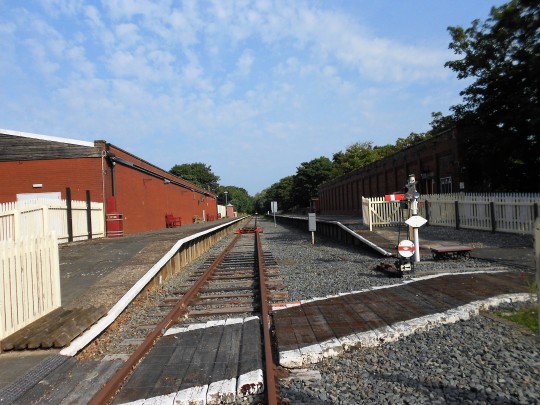
Thornton Railway Station, on a disused line, but restored by the Poulton and Fylde Railway Society, who are not a cargo cult.
#thornton railway station#disused line#thornton#poulton and wyre railway society#restored railway station#build it and they will come
0 notes
Video
Ashington No.5 arriving at Middle Engine Lane by North Tyneside Steam Railway
Via Flickr:
Peckett & Sons 0-6-0ST Ashington No.5 entering Middle Engine Lane station. (C) Stephen Thornton
1 note
·
View note
Text
Foster + Partners and Marge Arkitekter chosen to redevelop Stockholm Central Station
A team led by British firm Foster + Partners and Swedish studio Marge Arkitekter has won a competition for the redevelopment of Stockholm Central Station.
The project aims to double passenger capacity at Sweden's largest railway station, bringing several train lines and bus routes together in a centralised hub.
The plans involve bridging over the railway tracks
The contest-winning design was prepared by Foster + Partners and Marge Arkitekter with landscape office LAND Arkitektur, engineering firms Thornton Tomasetti and Ramboll, conservation architect Wenanders and real-estate firm TAM Group.
The scheme will see a series of new buildings installed over the railway tracks, a new public square outside the station entrance and improved pedestrian routes across the site.
The team will now progress its proposals ahead of planning consultations scheduled for 2023.
The project will double passenger capacity for the station
"This is a historic undertaking," said Angus Campbell, senior partner at Foster + Partners.
"Stockholm is a unique city with historic city silhouettes," he stated. "We believe our proposals can form meaningful connections between the city and the central station area, while creating green urban spaces for people to meet, as well as a central focus for sustainable travel at the heart of Stockholm."
The designs make the station precinct more pedestrian-friendly
First built in 1871, Stockholm Central Station is currently operating above its capacity. Future plans will see more trains arriving into the city, which will increase passenger numbers further.
The redevelopment plans include a series of moves to allow the station to operate more effectively.
Read:
Foster + Partners shelters subterranean art gallery with pyramidal roofscape
The main access tunnel will be relocated to align with Klarabergsgatan, creating a new east/west link across the site. This will provide a central point of access to all mainline trains, Arlanda Express trains and City Terminal buses.
In the future, it would be possible to also create access to the Citybanan metro line in this location.
The Klarabergsgatan will be narrowed to make room for an extension to the station waiting hall
By narrowing the Klarabergsgatan, reducing access for private cars, the station's historic waiting hall can be extended to connect with this new tunnel.
A public plaza is created in this location, which will make the station precinct easier to navigate, while a historic park will be reinstated at the southern tip of the site.
This waiting hall will provide access to mainline trains, Arlanda Express trains and City Terminal buses
Bridges will be constructed over the railway tracks, to create space for new mixed-use buildings and streetscapes.
Visualisations suggest that six new buildings will be installed over the tracks. These will be designed to replicate the colours and proportions of Stockholm's Klara architecture, located nearby.
New buildings will be designed to respect Stockholm's Klara architecture
The plans also includes the construction of a logistics centre, to service goods and refuse without disrupting the public square, and the removal of an existing building, to open up views towards the old town, Gamla Stan.
"It is fantastic to be involved in redefining Central Station's role at the heart for Stockholm, while at the same time providing new additions that reference the surrounding streetscape of traditional Klara block architecture, which respects the cultural values of the city," said Pye Aurell Ehrström, a founding partner of Marge Arkitekter.
A historic park will be reinstated at the southern tip of the site
Marge Arkitekter has experience working on transport projects in Stockholm, having previously designed the city's ferry terminal.
Foster + Partners has worked on numerous railway infrastructure projects, including Dresden Central Station in Germany and Canary Wharf Underground and Crossrail Stations in London.
The firm has also developed proposals for high-speed rail stations in Italy, Spain and across Saudi Arabia.
The designs aim to improve connections across the site, from east to west
"As the world's collective focus shifts to more sustainable ways of living, working and travelling, it is vital that we enhance and redevelop our transport nodes and repair and connect the urban fabric around them," said Luke Fox, head of studio at Foster + Partners.
"We look forward to developing these proposals with Jernhusen, Trafikverket and the City of Stockholm over the coming months."
Planning consultations are scheduled for 2023
Foster + Partners has recently completed two major projects: the Datong Art Museum in northern China and the Narbo Via museum in southern France.
The firm was also in the news recently after criticising a RIBA sustainability report backed by nearly 250 built environment organisations.
The post Foster + Partners and Marge Arkitekter chosen to redevelop Stockholm Central Station appeared first on Dezeen.
0 notes
Text
British tourist in Thailand is feared to be first western victim of new Chinese coronavirus | Daily Mail Online

A British tourist fighting for his life in Thailand is feared to be the first Western victim of the coronavirus sweeping across China.
Ash Shorley, 32, is in critical condition in a hospital in Phuket after being struck down with a lung infection while visiting Koh Phi Phi island.
Mr Shorley had to be transported to hospital by a specialised seaplane because his lung had collapsed and he could not cope with high altitude travel.
Doctors revealed his symptoms were consistent with the Chinese coronavirus – but this has not yet been confirmed.
The unnamed SARS-like virus has killed three people and has infected an estimated 1,700 in Wuhan city since December, researchers fear.
Some 222 cases have been confirmed. Authorities today said the virus has spread across China, with five cases in Beijing, 14 in Shenzhen and one in Shanghai.
South Korea has also recorded a case today, making it the third country to diagnose the virus following Thailand and Japan last week.
The spike in cases comes just days before millions of Chinese nationals travel abroad for the Lunar New Year holidays, with airports across Asia and the US to screen travellers.
Mr Shorley's parents Chris and Julie, from Thornton, Lancashire, have flown out to be by their son's bedside as tests are carried out.
Ash Shorley, 32, is fighting for his life in Thailand and is feared to be the first Western victim of the coronavirus sweeping across China
Mr Shorley is in critical condition in a hospital in Phuket after being struck down with the pneumonia-like lung infection while visiting Koh Phi Phi island
The unnamed novel virus has infected an estimated 1,700 in Wuhan, China. Authorities said the virus had spread to other cities in China. The total confirmed cases has tipped 200 and three have died. Four confirmed cases are outside China in Thailand, Japan, and South Korea
His father, 55, told The Sun: 'He was two days from death. If he wasn’t so fit, he wouldn’t be with us now. We are now waiting on tests. It is very serious.'
The coronavirus – which has never been seen before – was first discovered in the city of Wuhan in December.
There were 48 confirmed cases on Friday, but hundreds of infections were reported over the weekend because screening is now possible.
Now, 222 cases have been confirmed including three deaths, according to the World Health Organization (WHO).
However, there are growing fears that Chinese authorities are hiding the true scale of the outbreak, which has links to the deadly SARS virus.
An analysis from Imperial College London last week estimated the number of cases in Wuhan was probably around 1,700 – but could even be as high as 4,500.
A spokesperson for China's Ministry of Foreign Affairs said today the country had 'stuck to a serious, earnest and professional attitude' to prevent and control the outbreak.
It is not confirmed if Mr Shorley has the novel coronavirus. But doctors say his pneumonia-like lung infection has symptoms similar
Mr Shorley's parents Chris and Julie, from Thornton, Lancashire, have flown out to be by their son's bedside. He is pictured in hospital
Airports in Singapore, Hong Kong, Indonesia, Thailand, Japan and the US have stepped up surveillance. Pictured, an airport in Tokyo, Japan, where one case was identified
WHAT IS THE NEW CORONAVIRUS SPREADING FROM CHINA?
An outbreak of pneumonia-like illnesses began in Wuhan, China, at the end of 2019.
Its symptoms are typically a fever, cough and trouble breathing, but some patients have developed pneumonia, a potentially life-threatening infection that causes inflammation of the small air sacs in the lungs.
Scientists in China recognized its similarity to two viruses that turned into global killers: SARS and MERS.
SARS, or severe acute respiratory syndrome is caused by the SARS coronavirus, known as SARS Co, and first emerged in China in 2002.
By the end of the outbreak, the virus had spread to several other Asian countries as well as the UK and Canada, killing 774.
MERS, or Middle East respirator syndrome originated in the region for which it's named, ultimately killed 787 people and belongs to the same family of coronaviruses as SARS.
The new virus wasn't a match for either of those two, but it did belong to the same coronavirus family.
Coronaviruses are a large family of pathogens, and most cause mild respiratory infections - i.e. the common cold.
But because the SARS and MERS proved deadly, the emergence of another new coronavirus has health officials on edge around the world.
Like its two dangerous cousins, the new coronavirus appears to have originated with animals - particularly seafood, chickens, bats, marmots - found at a Wuhan market that's been identified as the epicenter of the outbreak.
The symptoms of SARS, which may be similar to those of the new coronavirus, include:
After these symptoms, the infection will begin to affect your lungs and airways (respiratory system), leading to additional symptoms, such as:
So far, there isn't a treatment for the new virus or SARS, though the new virus has been sequenced, allowing for rapid diagnostics.
They said they had 'carried out in-depth epidemiological investigation, released the information related to the control and treatment of the outbreak in time and actively spread related educational knowledge'.
South Korea confirmed its first case on January 20 after a 35-year-old woman arriving at Seoul’s Incheon airport tested positive for the virus. She had been in Wuhan last week.
Last week, one case was confirmed in Japan and two in Thailand, meaning the total number of confirmed cases outside of China now sits at four.
All of the Chinese nationals had recently visited Wuhan, but it is not clear if Mr Shorley visited the city – home to 11million people – on his travels.
China reported on January 20 the mysterious virus had spread across the country from Wuhan.
Health authorities in Beijing's Daxing district said two people who had travelled to Wuhan were treated for pneumonia linked to the virus and are in stable condition.
In southern Guangdong province, a 66-year-old Shenzhen man was quarantined on January 11 after contracting a fever and showing other symptoms.
He had visited relatives in Wuhan, the provincial health commission said. He is also in stable condition.
Shenzhen officials said another eight people were under medical observation.
Suspected cases have also cropped up in Sichuan, Yunnan, Shanghai, Guangxi and Shandong. Tests have yet to confirm the patients have the coronavirus.
'Experts believe that the current epidemic situation is still preventable and controllable,' the Guangdong health commission said.
Five other people have been put in isolation and tested in eastern Zhejiang province.
Since cases have been identified outside the country, the WHO has warned hospitals worldwide to prepare for a potential global spread.
Though the known cases of the outbreak so far involve only individuals who have travelled to or live in Wuhan, the WHO has warned that a wider outbreak is possible.
Fears are growing ahead of Lunar New Year, on January 25, which will see millions of Chinese citizens travelling abroad.
Wuhan authorities said they have installed infrared thermometers at airports, railway stations and coach stations across the city.
Passengers with fevers were being registered, given masks and taken to medical institutions.
Airports in Singapore, Hong Kong – where there have been suspected but no confirmed cases – Indonesia, Thailand, Japan and the US have also stepped up surveillance.
Temperature checks are being used for inbound travellers from the Chinese mainland, especially Wuhan. This is how the two cases in Thailand were discovered.
Over the weekend, 136 fresh infections were reported in Wuhan, bringing the total number of cases China has confirmed to more than 200
Chinese residents wear masks while waiting at a bus station near the closed Huanan Seafood Wholesale Market, which has been linked to the outbreak which started in December
A seafood market is believed to be the centre of the outbreak in the city, but health officials have reported that some patients had no history of contact with the facility
The majority of patients have been traced to the Huanan Wholesale Seafood Market (pictured)
The coronavirus, which causes cold-like symptoms including a runny nose, headache, cough, sore throat and a fever, has never been seen before and has not yet been named.
Officials have described the virus in China, a tourist hotspot for some 595,000 British tourists each year, as 'novel'.
Tests have so far shown it is a new type of coronavirus from the same family as the deadly SARS pathogen which killed hundreds of people in China and Hong Kong in the early 2000s.
The first patient diagnosed with the novel strain, a 61-year-old man, died on January 9. The second death, a man known only as Xiong, died on January 15.
Both suffered other health problems, the former from abdominal tumours and chronic liver disease and the latter of severe cardiomyopathy – a heart condition, abnormal kidney function, and seriously damaged organs.
Pictured, Bangkok airport staff performing thermal scans on a traveller
But it is not clear if these were complications of the virus or underlying conditions.
Details of the third death have not yet been revealed by officials.
The majority of the infected patients in Wuhan have been traced to the Huanan Wholesale Seafood Market, which has been shut down since January 1.
The WHO said on Twitter on January 20 that 'an animal source seems the most likely primary source' with 'some limited human-to-human transmission occurring between close contacts'.
Although the genetic sequence of the strain has now been released, scientists are still questioning how deadly it is, and whether it can be spread between humans.
Scientists with the MRC Centre for Global Infectious Disease Analysis at Imperial College in London warned in a paper published Friday that the number of cases identified in Wuhan may be the 'tip of the iceberg'.
Researchers calculated cases could be as high as 4,500 in Wuhan city, and if this is the case, substantial human to human transmission can't be ruled out.
Chinese state media moved to calm the mood as discussion about the coronavirus spreading to other Chinese cities swelled on social media.
Nationalist tabloid Global Times called for better handling of the new virus than that of the 2003 SARS outbreak.
THE NEW CORONAVIRUS IN CHINA TIMELINE
December 31 2019: The WHO China Country Office was informed of cases of pneumonia of unknown cause detected in Wuhan City, Hubei Province of China. Around 44 suspected cases were reported in the month of December.
January 1 2020: A seafood market was closed for environmental sanitation and disinfection after being closely linked with the patients.
January 5 2020: Doctors ruled out severe acute respiratory syndrome (SARS) as being the cause of the virus, as well as bird flu, Middle East respiratory syndrome and adenovirus. Meanwhile, Hong Kong reported
January 9 2020: A preliminary investigation identified the respiratory disease as a new type of coronavirus, Chinese state media reported.
Officials at Wuhan Municipal Health Commission reported the outbreak's first death on January 9, a 61-year-old man.
January 13 2020: A Chinese woman in Thailand was the first confirmed case of the mystery virus outside of China. The 61-year-old was quarantined on January 8, but has since returned home in a stable condition after having treatment, the Thai Health Ministry said.
January 14 2020: The WHO told hospitals around the globe to prepare, in the 'possible' event of the infection spreading.
It said there is some 'limited' human-to-human transmission of the virus. Two days previously, the UN agency said there was 'no clear evidence of human to human transmission'.
January 16 2020: A man in Tokyo is confirmed to have tested positive for the disease after travelling to the Chinese city of Wuhan.
A second death, a 69-year-old man, was reported by officials at Wuhan Municipal Health Commission. He died in the early hours of January 15 at Jinyintan Hospital in Wuhan city having first been admitted to hospital on December 31.
January 17 2020: Thailand announces it has detected a second case. The 74-year-old woman had been quarantined since her arrival on Monday. She lived in Wuhan.
Scientists at Imperial College London fear up to 4,500 patients in Wuhan may have caught the virus. A report said if cases are this high, substantial human to human transmission can't be ruled out.
John F Kennedy International Airport (JFK), San Francisco International Airport and Los Angles International Airport (LAX) will start screening passengers arriving from Wuhan, US officials said.
January 20 2020: China reported a sharp rise in the number of people infected with a new coronavirus over the weekend, including 136 more cases in Wuhan city.
The outbreak spread across China, as authorities in Shenzhen in southern China reported one case, and Chinese state media said Beijing had reported two cases.
South Korea confirmed its first case - a 35-year-old woman arriving at Seoul’s Incheon airport tested positive for the virus. She had been in Wuhan the week prior.
The total number of confirmed cases reached 205, including three deaths and four confirmed cases outside China.
Details were not revealed about the third death.
This content was originally published here.
0 notes
Text
How can you tell that an Irish person’s successful? The media starts calling them British
by Séamas O'Reilly
This article will be tl;dr for most, so here are some highlights from this genius article. And before flaming me, read the second-last quote.
This week Shane Lowry did something he may well have never expected – a career-defining moment that ensures, however else his career pans out, he will always have this one achievement on which to look back fondly.
I speak not of his impressive victory at the British Open, although he probably enjoyed that just fine – I’d have to check – but of what came with it. The soul-vaulting honour afforded to any Irish person attempting something above their humble station: being referred to as “British” the second he achieved it.
------------------------------
“Britishness” is, essentially, a slightly less nationalistic way for English people to declare how great England is, while deploying a meagre fig-leaf of imperial distance which, for some reason, they find more palatable.
-----------------------------
It’s stranger, in 2019, to see Harper’s Bazaar stick Saoirse Ronan on their January cover, championed as “the spirit of Britain”, despite the fact she has the cheery brogue of a small, Irish, cartoon mouse and a vowel count which surely leaves little room for confusion. We tried the same trick with the awkward spelling of Domhnall Gleeson, but no dice there either, since he was promptly called a “British actor” by GQ, the Guardian and the Daily Mail the second he did a high profile Burberry campaign. And who can forget the time Kate Thornton referred to Colin Farrell – a man so Irish he feeds his mammoth eyebrows on a strict diet of rosaries and red lemonade – as British, which prompted his co-star Samuel L Jackson to liken Thornton’s attitudes to those of American slave-owners.
----------------------------
Most English people would prefer – and thus choose to presume – that British stereotypes revolve around things like queuing, passive aggression, drinking tea and so on. We would all, of course, love to write our own reviews. But, inconveniently, Britain’s neighbours don’t often mention much of that stuff, since the fact that it invaded or colonised all but 22 of the planet’s nations tends to take centre stage. On these travels, they brought with them not just cricket, gin and bally good railways, but death, starvation and sufficient cultural erasure that I, an Irish person, am writing these words in English.
----------------------------
This doesn’t mean all former colonists hate the British, or the English, or that we don’t all get along famously now – it’s just that the past did actually happen, and everyone but Britain appears to be aware of it. Bringing any of this up risks making us sound a bit touchy, or even insensitive, since these are usually honest mistakes about trifling issues.
----------------------------
Society has to move on. And that means never teaching an entire nation of people any of the commonplace things about their own country that might make it easier for them to avoid such faux-pas.
#not all english people obviously#but the attitude is overwhelmingly as described in this article#look at the attitude towards ireland standing its ground about the backstop#or the astonishment at us not bending to britain's (let's be real - england's) will and following them out of the eu for their convenience
0 notes
Text
Transport watchdogs reject plan to close railway ticket offices
Delayed service: the ticket office at East Croydon, which the rail operators claimed is barely used and was under threat of closure
99% of consultation responses opposed the proposals, with East Croydon and Sanderstead among the stations to attract the largest number of objections
It is probably the first cancellation on the railways to be greeted with widespread public acclaim.
Plans by the…
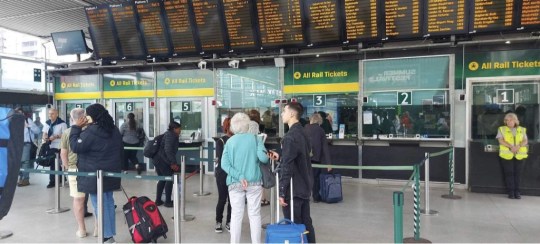
View On WordPress
#Conservative#Coulsdon#Croydon#Department for Transport#East Croydon station#Govia Thameslink#GTR#London TravelWatch#Norwood Junction#Purley#Railway ticket offices#South Norwood#Thornton Heath#Tory
0 notes
Text
CUL Digital Collections Update: July 2017
In July 2017, SMU’s Central University Libraries uploaded 326 items into CUL Digital Collections.
Highlights include:
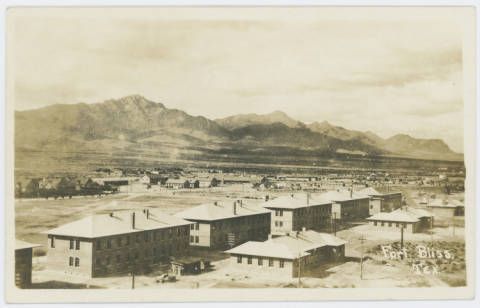
Fort Bliss, Tex. ca. 1910-1919, George W. Cook Dallas/Texas Image Collection, DeGolyer Library, SMU.
149 real photographic postcards, ca. 1900-1923, from the George W. Cook Dallas/Texas Image Collection, as part of the TexTreasuresFY2017 grant program, sponsored by the Texas State Library and Archives Commission and funded by the Institute of Museum and Library Services. Photographers include Marcus Black, Francis King Duncan and Margaret Louise Duncan, William W. Monteith, Roy Jernigan, Charles and Luisa Flanders, Earl Shipman, Zeva B. Edworthy, Albion Morgner Windhorst, Walter H. Horne, H.J. Brauning, Rufus Frank L. Wiseman, and others. Several photographs focus on military activities and former frontier forts. Among these are a view of the building Robert E. Lee occupied in Fort Ringgold before the Civil War, a street scene in Rio Grande City with a banner welcoming the 16th Cavalry, a view of the Kansas City, Mexico, the Orient railroad station in Fort Stockton, a scene of everyday life in Fort Davis, and a historic photograph of Fort Bliss.

Mosquito Fleet, 1915, Galveston, George W. Cook Dallas/Texas Image Collection, DeGolyer Library, SMU.
Tarrant County is another focal point. Photographs show the city of Polytechnic before it was incorporated into Fort Worth, construction and flooding, and scenes of Lake Worth. Galveston and Fredericksburg are also represented. Photographs of Galveston feature the Hurricane of 1915, Texas Heroes Monument, the interior of the city’s Union Depot station, the sea wall, ships, beach-goers, and the city’s Electric Park, an amusement park located near the beach. One notable image of this park is Electric Park at Night. Galveston, which illustrates the magnificence of electricity, a relatively new invention at the time. Photography of Fredericksburg shows the historic Nimitz Hotel, scenes of city life and local buildings, a local band, an Independence Day parade, the Gillespie County Courthouse, and bird’s eye views of the town.

Lake Eyrie Power Plant, ca. 1908-1910, George W. Cook Dallas/Texas Image Collection, DeGolyer Library, SMU.
Businesses and industries depicted include the Lake Erie Power Plant in Handley (now incorporated into Fort Worth); workers in Grand Saline’s salt mining industry; a harvest of melons in Hempstead; cotton gins in Gonzales, Groesbeck, and Hearne; a storefront in Harrisburg; the Hot Well and Sanatarium in Hubbard; the Hico Roller Mills Elevator building during a flood; people gathered on the shore of the Rio Grande near a U.S. Customs House; and construction workers in Grand Prairie. Other noteworthy scenes include photographs of automobile races in Granger, a Fourth of July parade in Hidalgo, saloons in Hondo, the town of Hico covered in snow, and churches in Grand Prairie, Grandview, Hubbard, and Hearne. Still more photographs show street views, scenes of everyday life, and buildings in Forney, Friona, Frost, Fulshear, Gainesville, Garland, Gay Hill, Giddings, Glen Rose, Goliad, and Gonzales.
Three panoramas from the Giesecke Family Collection of Photographs and Panoramas of Mexico, taken by E.B. Downing and Kurt P. Giesecke. These images include mining operations in rural Mexico, featuring miners’ dwellings and industrial buildings. Also among the panoramas is a scene taken at the Columna de la Independencia in Mexico City during the Mexican Centennial celebrations.
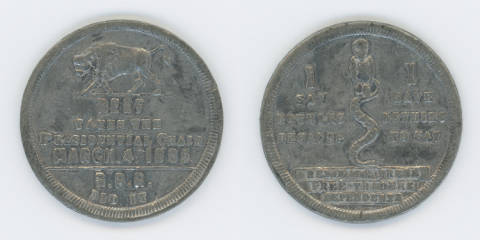
Beef Takes the Presidential Chair, 1885, DeGolyer Library, SMU.
18 items, created between 1833 and 1920, from the Hervey A. Priddy Collection of American Presidential and Political Memorabilia, including images of badges, buttons, tokens, and medals relating to several presidential campaigns and inaugurations. Of particular interest is Beef Takes the Presidential Chair, a medalet which satirizes the size and policies of President Grover Cleveland on the occasion of his first inauguration. The medalet features a bison, which references Buffalo, New York, where Grover Cleveland had been mayor, and a harpy meant to represent his opponent, James Blaine.
1 photograph of a French Military light railway train from World War 1 was added to Europe, Asia, and Australia- Photographs, Manuscripts, and Imprints.
3 photographs from the Mexican Revolution era were added to the American Border Troops and the Mexican Revolution series in the Mexico: Photographs, Manuscripts, and Imprints collection, including a photograph of Santiago Pescador,which he dedicated to his cousins “with affection” in a handwritten note on the verso.
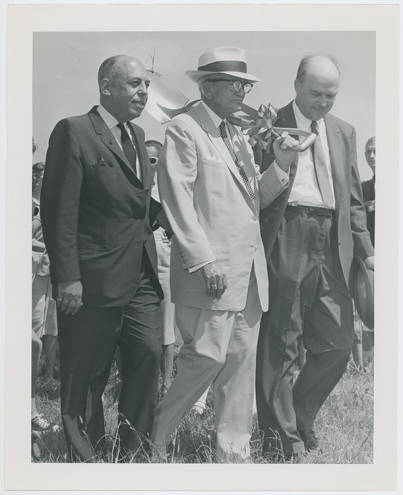
Hockaday School Groundbreaking, Summer 1960, by Kurt W. Boris, DeGolyer Library, SMU.
1 photograph of the groundbreaking ceremony for the Hockaday School, featuring Stanley Marcus, J. Erik Jonsson, and Robert L. Thornton, who was then the mayor of Dallas, was added to the Stanley Marcus Papers.
1 stereograph of a building in a field by Louis de Planque and 1 photograph of a street, possibly in El Paso, by Francis Parker were added to the Texas: Photographs, Manuscripts, and Imprints collection.
2 stereographs by W. Henry Brown depicting Santa Fe, New Mexico and 2 stereographs by Alexander Gardner which show the areas near Union Pacific Railway lines in Kansas were added to the U.S. West: Photographs, Manuscripts, and Imprints collection.

Machine Gun Truck, ca. 1910-1918, DeGolyer Library, SMU.
28 postcards and photographs by Abel Briquet, Walter Horne, C.B. Waite, Sanchez Cruz, and Yanez y Guillen from the Elmer and Diane Powell Collection on Mexico and the Mexican Revolution. These images depict scenes on the border during the Mexican Revolution, including photographs of Camp Stewart and U.S. forces in the area at the time. Also included are images from Abel Briquet’s Tipos Mexicanos series, which attempt to depict ordinary life in Mexico at the time the photographer was working there. Among these scenes are Indian water carriers and a huacalero, or a hen coop carrier.

Yegar [sic] a Mexico, ca. 1910-1916, DeGolyer Library, SMU.
117 photographs and postcards, ca. 1910-1924, from the Elmer and Diane Powell Collection on Mexico and the Mexican Revolution,featuring images of the Convention of Aguascalientes and the Decena Tragica, a ten-day event during which President Francisco Madero and Vice President Jose Maria Pino Suarez were assassinated in a coup. The album was owned by General Agustin Maciel, who appears in several of the photographs. Noteworthy images include photographs of Francisco Madero and Jose Maria Pino Suarez taken a few days before their assassinations, as well as a number of images of Victoriano Huerta, who organized the coup against Madero and became president of Mexico following Madero’s death. One image shows Huerta arriving in Mexico City with a group of women and children, possibly his family.
#smu#southern methodist university#archives#libraries#digital collections#mexico#texas#stanley marcus#hockaday
2 notes
·
View notes
Text
FAREWELL TO THE ‘DREAM FACTORY’ AS 60 YEARS OF TV PRODUCTION AT RIPPONLEA STUDIOS COMES TO AN END

(Filming of the final program of ‘The World of Operatta’ at the Ripponlea studios in 1964 - Suzanne Steele is singing ‘Paradise in Waltz Time’ in a bubble bath! - Photo: ABC archives)
After 60 years, production at the ABC’s Ripponlea TV studios is winding down and staff are moving out to refurbished headquarters at Southbank. Australian Story producer Belinda Hawkins, cameraman Mark Farnell and set buyer/dresser Andrew Best share their memories of working at the station, which dates back to the start of television and has been home to many of Australia’s iconic programs.
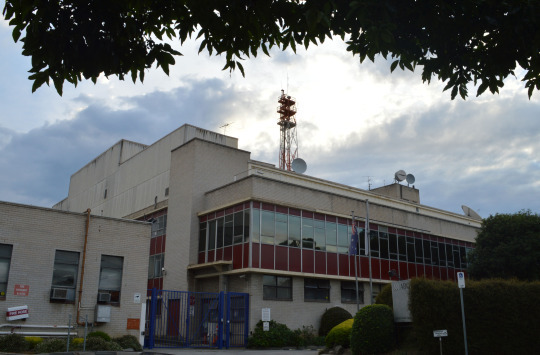
(The ABC studios in Gordon Street, Elsternwick date back to the start of television in Australia - Photo: Natasha Johnson)
By Natasha Johnson
The sparkle has faded, the paint is peeling, and the whole building looks generally worn out. Built in the 1950′s, the Ripponlea TV station has asbestos (safely contained) in the walls and parts of the site are prone to flooding, but when Australian Story producer Belinda Hawkins talks about it closing her voice breaks and her eyes fill with tears.
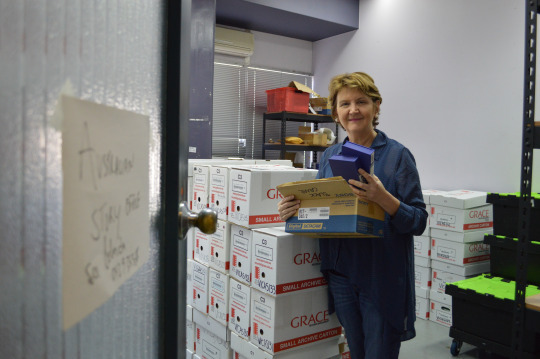
(Australian Story producer Belinda Hawkins has spent weeks sorting, boxing and cataloguing 17 years of tapes - Photo: Mark Farnell)
“Everyone who had anytime here, who is packing up now is beside themselves with sadness,” says Belinda.
)
Most of her News colleagues moved to the ABC’s Southbank studios more than a decade ago, but Belinda Hawkins has stayed put, working out of an office that was once a film viewing room and still has bits of an old film cleaning machine hanging in a storage cupboard.
“I think I will burst into tears when we leave. I’m leaving my history.”

(Set buyer/dresser Andrew Best in the props department - Photo: Natasha Johnson)
It’s a sentiment shared by Andrew Best, set buyer/dresser and unofficial ‘historian’ who has worked at Ripponlea for 36 years and occasionally conducts public tours of the site.
vimeo
VIDEO: TAKE A TOUR BEHIND THE SCENES OF THE RIPPONLEA STUDIOS, WARDROBE AND PROPS DEPARTMENTS WITH ANDREW BEST
“It’s time to move on, but I’m very sad actually,” says Andrew. “I think after nearly 36 years here, that’s over half the time that TV has been in Australia, you feel very attached to somewhere you come to every day and have made so many wonderful friends and helped create so many fantastic things, it is very difficult to leave.”

(A flyer announcing the official opening of the ABC studios in 1958 - supplied: Andrew Best)
Attachment to the old brick building, known affectionately by staff as “Rippers’, stems from its place in the history of television production. The studios, in Gordon Street, Elsternwick, date back to the start of TV in Australia. The ABC started broadcasting in Victoria in 1956, in time for the Melbourne Olympic Games, and the completed studios were officially opened in 1958.
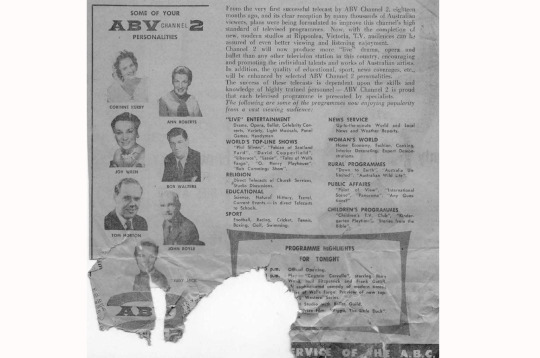
(A flyer promoting the programs and personalities on ABV2 at the time of the official opening of the studios in 1958 - supplied: Andrew Best)
Since then, a host of iconic Australian programs, dramas, and variety shows have been produced at Ripponlea, including the children’s show Adventure Island, sixties soapie Bellbird, period drama Power Without Glory, Countdown, The Gillies Report, The Big Gig, SeaChange, Kath and Kim and, more recently, Mad as Hell and The Weekly.

(Children’s show ‘Adventure Island’ being filmed at Ripponlea in the 1960′s - Photo: ABC archives)
“In the sixties this was called the ‘dream factory’ because it was the beginning of TV and really anything you could dream up was new and exciting and you could create it here. I think latterly I’ve thought of it as Hollywood by the Bay because we’ve had a lot of stars go onto Hollywood and alike,” says Andrew Best, who has worked alongside many of them, including Hugh Jackman, Eric Bana, Sigrid Thornton and Kerry Armstrong.

(Andrew Best on location with actress Kerry Armstrong during filming of ‘Bed of Roses - Photo: Andrew Best)
“It does really have that feeling that just anything could happen here and so many wonderful shows have come out of here.”

(Filming ‘Countdown’ at Ripponlea - Photo: ABC archives)
The studios were built on land that was originally part of the historic Rippon Lea Estate, a location which has caused some headaches over the years.
“The studios border the back end of the Rippon Lea gardens where there is a large lake and this was essentially swampland,” says Andrew Best.

(Inside Studio 31 where ‘The Weekly’ is currently being produced until moving to the new Southbank studios - Photo: Natasha Johnson)
“So if we have extreme rain the studios and scenic runway behind them can be deep in water. We’re also next to a railway line and quite often in the fifties and sixties when trains went by they would make the entire lower level of the building shake and the cameras in the studio would be wobbling. It’s been fixed since with thick concrete floors, but in the early days people would say “Oh, I think that’s the 5.09 to Sandringham going by”, it was that rattly.”

(Belinda Hawkins as a young news reporter - Photo: Belinda Hawkins)
Belinda Hawkins started at Ripponlea in 1985 as a 28 year old News cadet, having abandoned a teaching career to chase her dream of being a journalist.
“The first day I walked in here and got my ABC lanyard I thought I’m off on a magic carpet ride, I can go anywhere and talk to anyone I want, and I have never stopped feeling that way. I remember the first time I watched the news go to air and I just thought this is the best theatre in town. The newsroom was on the second floor, The 7.30 Report was below us and the studio was on the ground floor and there was a constant stream of people running up and down the stairwell, heading out on a story or a ‘scramble’ as it was called then or rushing scripts into the studio.”

(The stairs leading from the ground floor studio to the old newsroom on level two - Photo: Natasha Johnson)
“Everyone smoked and the newsroom was full of smoke. There was a constant buzz of noise in the newsroom: the clatter, clatter, clatter of typewriters, people shouting across the room, and there was a police scanner going all the time. A two-way radio was used to communicate with crews on the road and we had a Chief of Staff, Roger Delisle, who had been in the navy and he’d bark on the two-way “What is the SITREP on your ETA? Over!” I thought it was hilarious.”
vimeo
VIDEO: Rewind to see how the news was produced at Ripponlea in 1979
“In those days, (before automated studios), there were lots of people behind the cameras, in the studio and in the control room. The autocue script had to be put together manually - now it’s all computerised - and there were all these people frantically sticking sheets of paper together. There was just this enormous theatre involved in getting the news to air.”

(Cameraman Mark Farnell has worked at Ripponlea for 33 years - Photo: Natasha Johnson)
Cameraman Mark Farnell has been based here for 33 years and worked on a wide range of news, current affairs, arts and education programs. Starting in 1983, he was one of the last employees to be put through a three year traineeship program, learning all aspects of television production.

(Mark Farnell - second row, far right - with his fellow trainees in 1983 - Photo: ABC archives)
“It was an exciting, vibrant place to work,” Mark recalls. “There was a sense of being amongst the ‘bright lights’ and you’d pass people like Molly Meldrum and Max Gillies in the corridor.”
“There was lots of money going into TV production and, because it was then very labour intensive, there were lots of people working here and it was a 24/7 operation. A lighting crew would work overnight getting studios ready and there’d be a big technical crew on deck from 5am to ‘line up’ (calibrate) all the studio cameras.”
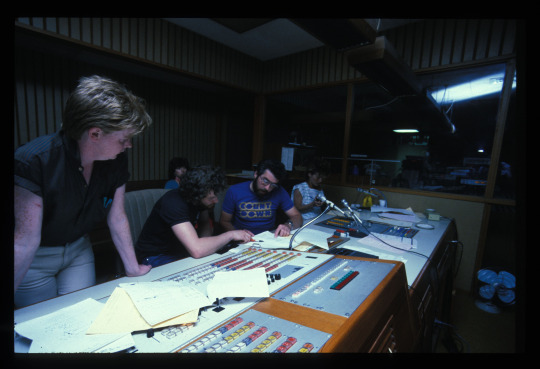
(In the control room during production of Countdown - Photo: ABC archives)
“It was less ‘serious’ then and there was lots of fun and games behind the scenes. I remember working in telecine one day and I’d laced up the machine with a film reel ready to go to air in the news and, without me realising, one of my colleagues flicked the switch to reverse so when the director hit roll it went backwards. No one got that upset about it. It was accepted that things went wrong and that people made mistakes. My trainer, Billy Wright, told us “If you make a mistake don’t worry about it, it’s only TV, not brain surgery!”
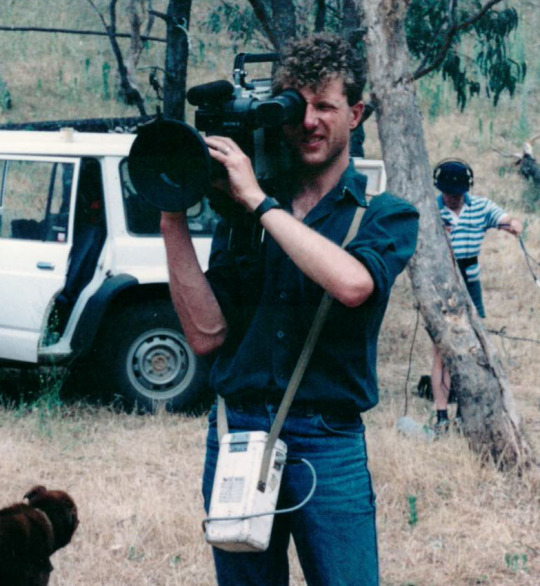
(Mark Farnell shooting a story in the early years of his career - Photo: Belinda Hawkins)
Mark Farnell first learnt to shoot on film and recalls how the medium required efficient and economical shooting.
“You couldn’t over shoot because the film had to be processed and it was expensive. You would very rarely run through a 400 foot roll, which was about 8 minutes. You had to get the footage back to the lab by 4pm to make the 7pm news. You wouldn’t go to a press conference and just roll endlessly on an interview. The journalist’s job was to ‘rehearse’ with the talent off camera so you could record the right answer straight up. It was liberating when we moved to video, and later digital cameras, because we could shoot a lot more material. There’s a lot less discipline in what we shoot now because we can accumulate huge amounts of material, but it’s opened up that ‘fly on the wall’ ability to capture the perfect moment that was hard to capture on film.”
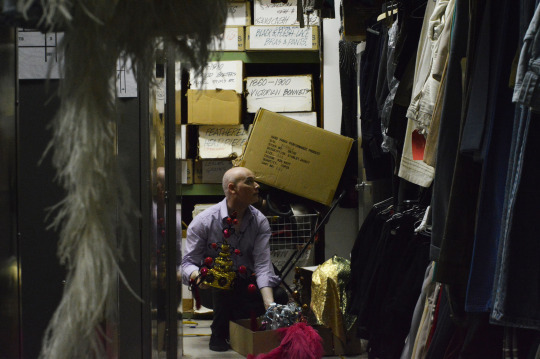
(Set buyer/dresser Andrew Best in the wardrobe department - Photo: Natasha Johnson)
Andrew Best started in dispatch in 1981, moved into staging and then became a buyer/dresser in the Art Department. His job is to realise the visions of designers and producers and make the sets ‘look real’. There’ve been some challenging moments along the way.
“I remember one designer insisted he didn’t want to see anything red on set, no red! I once got 10 different samples of a brown carpet and the designer still wanted a shade of brown between two samples that already looked pretty much alike. When I was working on Countdown and Cindi Lauper was performing ‘Girls Just Wanna Have Fun’, her manager kept screaming “I want more trash cans, we need more trash cans” for her set. It can be a frantic job, but it’s intensely rewarding.”

(Cindi Lauper on the Countdown set with host Molly Meldrum - Photo: ABC archives)
When dressing a set, first stop is always the ABC props stores, which Andrew Best fondly describes as looking like “the world’s biggest op shop”. And he’s not wrong.
“Some people think of it as the city tip, but to me it’s heaven on earth, you can find amazing things in here.”

(The props department, which Andrew Best describes as looking like “the world’s biggest op shop” - Photo: Natasha Johnson)
He insists there is a system to it, but to the untrained eye there seems to be just row after row, shelf after shelf of piles of junk: various styles of suitcases, telephones, crockery, furniture, paintings, toys, medical equipment, bathroom toiletries, a dozen different types of sticky tape dispensers and jars of lollies, well past their use by date.

(”Never throw anything out” says Andrew Best, even stale lollies - Photo: Andrew Best)
“The thing about a props store is that you always reuse everything, you never throw anything out, even when the mice have made a home in it, because you never know when the script is going to say ‘cereal box with mouse droppings in the bottom of it’!”

(An old pram amongst a props storeroom of furniture from different eras - Photo: Natasha Johnson)
Many of the props have been created by the ABC Art Department and among Andrew Best’s favourite items are rubber replicas of old Melbourne street lamps that were first used in Power Without Glory in the 1970s, hollow wooden blocks of books used to fill the shelves of numerous legal dramas (cheaper than real books) and a mauled wombat head, which was made for an episode of Bed of Roses, starring Kerry Armstrong.

(Andrew Best with one of his favorite props, a very realistic mauled wombat made for an episode of ‘Bed of Roses’ - Photo: Natasha Johnson)
“One of the story lines was that there was a panther on the loose around the country town where the show was set and one of the scenarios had a little girl coming across a wombat that had been eaten. This beautifully made prop cost about $1500 and two weeks to make and it is incredibly realistic.”

(Andrew Best with the wombat head on location during filming of the ‘Bed of Roses’ episode - Photo: Andrew Best)
As well as a vast props collection, the ABC has an enormous range of costumes, stored in several rooms at the Gordon Street site and the neighbouring Selwyn Street offices, where staff are also relocating. The collection, stretching back 60 years, includes many outfits handmade by the ABC wardrobe department and pieces are often hired out for external productions.
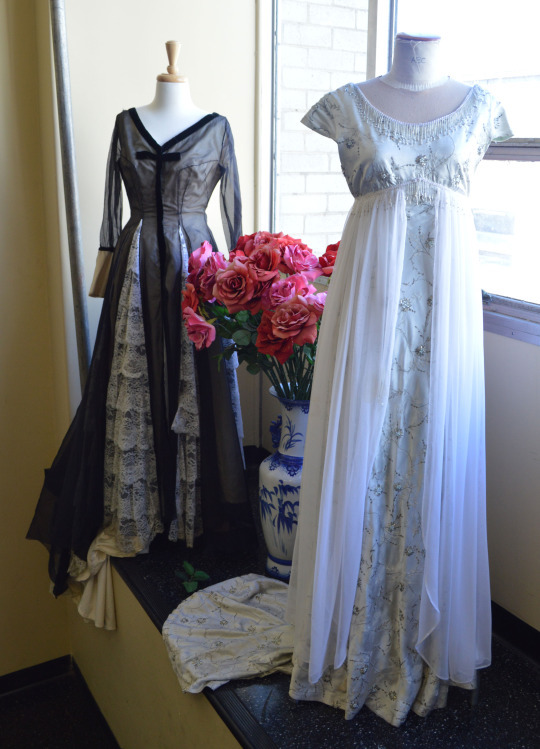
(A couple of gowns from the wardrobe store, which has thousands of costumes dating back to the start of television - Photo: Natasha Johnson)
“In the early days, we didn’t have a huge supply of clothing so a lot of the actors and performers would be asked to bring in their own clothing, cleaned, pressed and ready to wear. And sometimes they were even asked to bring in their own furniture as props!” says Andrew Best.

(The costume collection includes many period costumes made by ABC dressmakers - Photo: Natasha Johnson)
“In the 1970s, the ABC produced a great number of operettas, we had ‘The Saturday Show’ with Louetta Farrar, and we also made a lot of period dramas. So, we had a large workshop of seamstresses making dresses, hats, jackets, coats and gloves, particularly when we were making ‘Power Without Glory’ (set in Melbourne between the 1890′s and 1950′s). They weren’t costumes that you could just go out and buy.
Years ago, I remember going to the workshop where wardrobe used to be (in the nearby suburb of Highett) and it looked rather like Yves Saint Laurent’s Ateliers. There were about 20 women, everyone had white jackets on, with pins in their lapels working on huge old sewing machines. And even recently, with the Miss Fisher’s Murder Mysteries, a lot of the clothes were made here.”

(Among a large hat collection are some donated by local Elsternwick ladies - Photo: Natasha Johnson)
“The ABC has also been lucky that some of the older ladies living in the area have donated a lot of their hats, so we have some period hats that were actually worn in the thirties, forties and fifties by the local Elsternwick ladies.”

(A jacket believed to have been worn by the Mayor in an episode of ‘Adventure Island’ - Photo: Natasha Johnson)
Over the next few months, the wardrobe and props collections will be packed up and moved to new warehouses and all staff will be relocated at the newly refurbished Southbank complex. One of Ripponlea’s final productions will be a party for current and former staff to farewell the ‘dream factory’.
As he prepares to move on, Andrew Best recalls that when he joined the ABC in 1981, a jaded old colleague told him, ‘Mate, you’ve missed the glory years of the ABC but after 36 years, I think I’ve had some pretty glorious times here.”
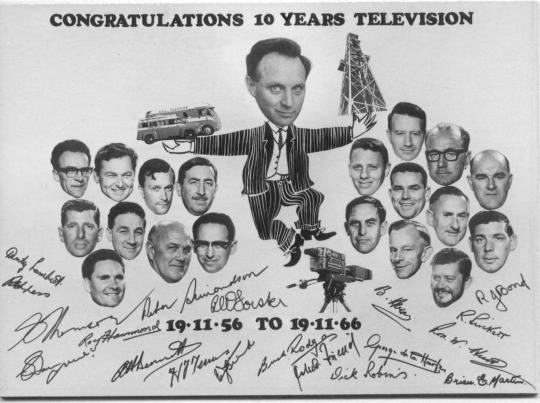
(A card celebrating the first ten years of ABC broadcasting in Victoria - supplied: Andrew Best)
#television#belinda hawkins#mark farnell#andrew best#props#staging#ripponlea#television production#australian story
5 notes
·
View notes
Text
Victorian AU Gobblepot fic idea
I saw a gifset on my dash and that made me realise how badly I need a North and South gobblepot AU. Jim as John Thornton, the harsh but secretly a softie inside factory owner and Oswald the newcomer in the small, industrial town, taking care of his sick mother. Oswald jumping in front of Jim when one of his workers throws a rock at Jim. Jim taking philosophy classes from Oswald’s dad, admiring Oswald’s wrists as he pours tea for them.
And more importantly, that amazing kiss in the railway station.
9 notes
·
View notes
Photo
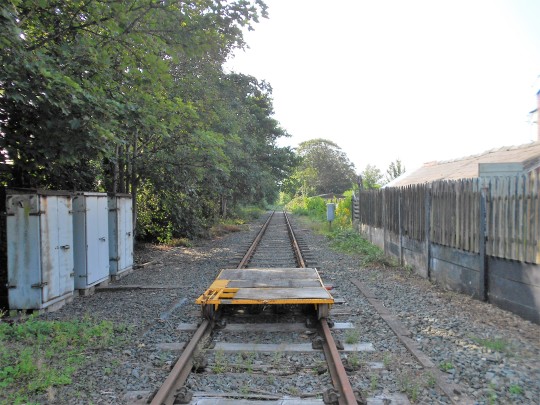
A bogey on the railway line between Poulton and Fleetwood, next to Thornton Station. Poulton and Wyre Railway Society are working to have the line reopened to traffic.
#bogey#railway line#poulton to fleetwood railway line#thornton railway station#poulton and wyre railway society#closed railway line
0 notes
Text
Foster + Partners and Marge Arkitekter chosen to redevelop Stockholm Central Station
A team led by British firm Foster + Partners and Swedish studio Marge Arkitekter has won a competition for the redevelopment of Stockholm Central Station.
The project aims to double passenger capacity at Sweden's largest railway station, bringing several train lines and bus routes together in a centralised hub.
The plans involve bridging over the railway tracks
The contest-winning design was prepared by Foster + Partners and Marge Arkitekter with landscape office LAND Arkitektur, engineering firms Thornton Tomasetti and Ramboll, conservation architect Wenanders and real-estate firm TAM Group.
The scheme will see a series of new buildings installed over the railway tracks, a new public square outside the station entrance and improved pedestrian routes across the site.
The team will now progress its proposals ahead of planning consultations scheduled for 2023.
The project will double passenger capacity for the station
"This is a historic undertaking," said Angus Campbell, senior partner at Foster + Partners.
"Stockholm is a unique city with historic city silhouettes," he stated. "We believe our proposals can form meaningful connections between the city and the central station area, while creating green urban spaces for people to meet, as well as a central focus for sustainable travel at the heart of Stockholm."
The designs make the station precinct more pedestrian-friendly
First built in 1871, Stockholm Central Station is currently operating above its capacity. Future plans will see more trains arriving into the city, which will increase passenger numbers further.
The redevelopment plans include a series of moves to allow the station to operate more effectively.
The main access tunnel will be relocated to align with Klarabergsgatan, creating a new east/west link across the site. This will provide a central point of access to all mainline trains, Arlanda Express trains and City Terminal buses.
In the future, it would be possible to also create access to the Citybanan metro line in this location.
The Klarabergsgatan will be narrowed to make room for an extension to the station waiting hall
By narrowing the Klarabergsgatan, reducing access for private cars, the station's historic waiting hall can be extended to connect with this new tunnel.
A public plaza is created in this location, which will make the station precinct easier to navigate, while a historic park will be reinstated at the southern tip of the site.
This waiting hall will provide access to mainline trains, Arlanda Express trains and City Terminal buses
Bridges will be constructed over the railway tracks, to create space for new mixed-use buildings and streetscapes.
Visualisations suggest that six new buildings will be installed over the tracks. These will be designed to replicate the colours and proportions of Stockholm's Klara architecture, located nearby.
New buildings will be designed to respect Stockholm's Klara architecture
The plans also includes the construction of a logistics centre, to service goods and refuse without disrupting the public square, and the removal of an existing building, to open up views towards the old town, Gamla Stan.
"It is fantastic to be involved in redefining Central Station's role at the heart for Stockholm, while at the same time providing new additions that reference the surrounding streetscape of traditional Klara block architecture, which respects the cultural values of the city," said Pye Aurell Ehrström, a founding partner of Marge Arkitekter.
A historic park will be reinstated at the southern tip of the site
Marge Arkitekter has experience working on transport projects in Stockholm, having previously designed the city's ferry terminal.
Foster + Partners has worked on numerous railway infrastructure projects, including Dresden Central Station in Germany and Canary Wharf Underground and Crossrail Stations in London.
The firm has also developed proposals for high-speed rail stations in Italy, Spain and across Saudi Arabia.
The designs aim to improve connections across the site, from east to west
"As the world's collective focus shifts to more sustainable ways of living, working and travelling, it is vital that we enhance and redevelop our transport nodes and repair and connect the urban fabric around them," said Luke Fox, head of studio at Foster + Partners.
"We look forward to developing these proposals with Jernhusen, Trafikverket and the City of Stockholm over the coming months."
Planning consultations are scheduled for 2023
Foster + Partners has recently completed two major projects: the Datong Art Museum in northern China and the Narbo Via museum in southern France.
The firm was also in the news recently after criticising a RIBA sustainability report backed by nearly 250 built environment organisations.
The post Foster + Partners and Marge Arkitekter chosen to redevelop Stockholm Central Station appeared first on Dezeen.
0 notes
